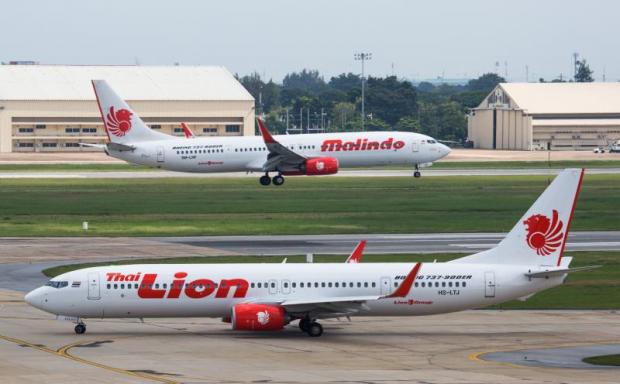
Low-cost carriers (LCCs) have continued to take a bigger slice of overall airline traffic through Thailand, a trend that is set to continue unabated.
The latest figures show that LCCs last year accounted for 44.9% of all passengers transiting through the six main airports operated by the Airports of Thailand Plc (AoT), compared with 42% in 2015.
Moving in tandem were aircraft movements by no-frills carriers through airports such as Suvarnabhumi and Don Mueang, which represented 45.3% of the total in 2016, edging up from 43.7% in the previous year.
Last year saw LCCs account for 54.7 million out of the 122 million passengers that moved through AOT-operated airports, which handle the bulk of air traffic through Thailand.
In contrast, budget airlines in 2015 handled 46.1 million passengers out of the 110 million total.
In 2016, take-offs and landings from AoT-operated airports by LCCs numbered 357,817, compared with 318,238 in the previous year. LCCs clearly continued to be the main driver for overall air traffic growth through those airports that year.
LCC passenger traffic volume rose 23.9% last year, which was lower than the 30.4% growth rate registered in the previous year.
Last year saw international passengers travelling on LCCs jump 35% to 19.2 million, while those on domestic LCC routes grew more slowly -- 18.6% to 35.5 million.
LCCs further enabled overall passenger traffic to keep its upward movement in 2016, albeit at half the pace recorded in 2015 over 2014.
Combined passenger throughput by LCCs and legacy carriers last year grew 10.8% to 122 million passengers, an increase from 110 million in the previous year, due partly to the slowdown in Chinese arrivals as result of the "zero-dollar" tour scam clampdown.
But the 2016 growth generally reflected a more traditional pattern, as the robust growth rate in 2015 was highly inflated in contrast with the subdued pace in 2014.
A stable political environment under military rule rejuvenated the Thai tourism industry and air traffic in 2015.
The bigger share gained by LCCs came as the LCC business model continued to flourish with more and more travellers being lured by their competitive fare offerings, fast expanding networks and frequent services.
Santisuk Klongchaiya, commercial director for Thai AirAsia, Thailand's largest LCC, said no-frills airlines will definitely gain a greater share of overall traffic in the years to come.
"If you look at the number of new aircraft orders by LCCs versus those by full-service carriers, they'll tell you what can be expected," he told the Bangkok Post. "The sky's the limit for LCCs."
